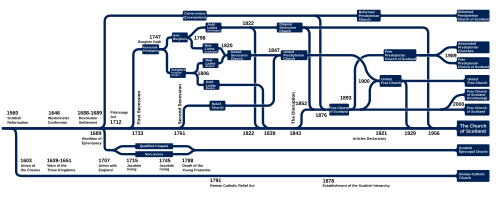

The church's logo, depicting a chalice with the Cross of Classification Orientation Associations,,,, Region The United States and Canada with partner churches worldwide Headquarters, Founder Various members from the non-denominational Christian Church formed the Council on Christian Union in 1910 which made a distinction in direction from independent Christian Churches and the. This was even more formalized in 1919 with the establishment of the United Christian Missionary Society. Denominational structure of the Disciples of Christ was formed in 1968.
Origin 1968 Kansas City Separations Churches of Christ, Christian Churches/Churches of Christ Congregations 3,627 Members 497,423 registered (2014) Official website The Christian Church (Disciples of Christ) is a denomination in the in the Reformed tradition. It is often referred to as The Christian Church, The Disciples of Christ, or as The Disciples. The Christian Church was a charter participant in the formation of the (WCC) and of the Federal Council of Churches (now the ), and it continues to be engaged in ecumenical conversations. The Disciples' local churches are. In 2008 there were 679,563 members in 3,714 congregations in North America.
Manual of Christian Reformed Church Government Manual of Christian Reformed Church Government 2015 Revision 2015 (Includes 2016 Updates) Revision.
By 2015, this number had declined to a baptized membership of 497,423 in 3,267 congregations, of whom about 306,905 were active members, while roughly 177,141 people attended Sunday services each week. Download Game Samurai Shodown 2 Cho Android there. Contents • • • • • • • • • • • • • • • • • • • • • • • • • • • History [ ] The name, Disciples of Christ, is shared by three other groups, The, the Independent, and the.
They emerged from the same roots. The began as two separate threads, each without knowledge of the other, during the in the early 19th century. The first of these two groups, led by began at,. The group called themselves simply Christians. The second, began in western Pennsylvania and Virginia (now West Virginia), led by and his son,. Because the founders wanted to abandon all denominational labels, they used the biblical names for the followers of Jesus that they found in the Bible. Main article: In 1801, the in planted the seed for a movement in Kentucky and the Valley to disassociate from.
In 1803 Stone and others withdrew from the Kentucky Presbytery and formed the. Ge Sunsmart Digital Timer 15079 Instructions more. The defining event of the Stone wing of the movement was the publication of the Last Will and Testament of the Springfield Presbytery, at Cane Ridge, Kentucky, in 1804. 'The Last Will' is a brief document in which Stone and five others announced their withdrawal from Presbyterianism and their intention to be solely part of the body of Christ.
The writers appealed for the unity of all who follow Jesus, suggested the value of congregational self-governance, and lifted the Bible as the source for understanding the will of God. They denounced the divisive use of the. Soon, they adopted the name 'Christian' to identify their group. Thus, the remnants of the Springfield Presbytery became the Christian Church. It is estimated that the Christian Church numbered about 12,000 by 1830. Campbells [ ].
Main article: Independently of Stone, the Campbell wing of the movement was launched when published the of the Christian Association of Washington, (Pennsylvania) in 1809. The Presbyterian Synod had suspended his ministerial credentials.
In The Declaration and Address he set forth some of his convictions about the church of, as he organized the, not as a church but as an association of persons seeking to grow in faith. On May 4, 1811, however, the Christian Association constituted itself as a congregationally governed church.
With the building it then constructed at Brush Run, it became known as. Young Alexander Campbell When their study of the New Testament led the reformers to begin to practice baptism by immersion, the nearby Redstone Baptist Association invited Brush Run Church to join with them for the purpose of fellowship. The reformers agreed provided that they would be 'allowed to preach and to teach whatever they learned from the Scriptures.' Thus began a sojourn for the reformers among the Baptists within the Redstone Baptist Association (1815–1824). While the reformers and the Baptists shared the same beliefs in baptism by immersion and congregational polity, it was soon clear that the reformers were not traditional Baptists. Within the Redstone Association, the differences became intolerable to some of the Baptist leaders, when began publishing a journal, The Christian Baptist, promoting reform. Campbell anticipated the conflict and moved his membership to a congregation of the in 1824.